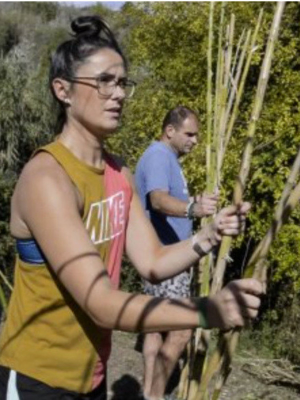5 Secrets To Planning A Successful Retreat for Distributed Teams
As with any remote team, physical interaction doesn’t happen unless a dedicated effort is made to get the team together. Whether the entire company gathers once a year or smaller teams meet up on a quarterly basis, meeting face-to-face and sharing company values regularly goes a long way in keeping everyone involved and in creating an enjoyable remote team experience for all.

While the idea of strengthening team bonds is often a top priority, planning and organizing an offsite retreat internally can be a challenging endeavor. In most cases, the CEO designates a team member to plan the retreat, alongside their regular job a process that often takes up a large percentage of this person’s job for the rest of the year.
The vision for the retreat is there, the time and expertise are not.
The truth is that for a successful team offsite retreat, there are few shortcuts. In other words, planning a company retreat requires a high level of personalization, care, and ingenuity to make it a memorable, one-of-a-kind experience.
Here are the basic aspects that need to be considered when planning an offsite retreat:
1. Find the perfect location
Finding the right location that’s easily accessible for everyone is definitely the most challenging part of the retreat planning process. But when evaluating where to go, warmth is the key. Warm destinations are more relaxed, there’s less stress about traveling and people get sick less often.
In general, there is just a better retreat experience when it’s someplace “warmish.” Wonderful experiences can also be had in colder locations, but at least for the big companywide trip, you’ll want to consider warmer locations.
If you’re a small team, it’s easy to just pick a couple of places and then have the entire team vote. Larger groups are a bit more limited in places they can go to and the types of lodging that can accommodate them. It is in these cases that a professional retreat planner with experience in working with distributed companies is helpful.
After evaluating the locations of your workforce, they will recommend three to five, vetted locations that might work within your budget. Once the choices are reduced down to two, then the whole company can vote on that. You’ll enjoy 100% participation since everyone is excited to vote on where the next retreat will be.
2. Structure your retreat
Small teams can be more informal in their structure. However, if more than 20 people are attending, you’ll likely want to have a big launch at the end of the all-company retreat or reaching the completion of a project that everyone has been working on.
A simple structure that works for many companies is scheduling a couple of days of companywide-focus and a couple of days of team-focus and a little bit of playtime in between.
Small teams can be more informal in their retreat structure and will likely want to accomplish a big goal by the end of the retreat, like launching a new product or completing something that everyone had been working on.
Usually, distributed workforces over 20 people take a more traditional approach to structuring retreats, scheduling a couple of days of companywide-focus, a couple of days of team-focus and a little bit of playtime in between. By contrast, larger companies tend to not have such a big ambitious goal for the retreat week.
3. Manage energy & illness
Be prepared for the possibility that people will bring illnesses. Retreat flu is a reality. What you can do to reduce the impact of illness during your retreat, you can tell people one week before the retreat to exercise, eat well, sleep and set themselves up for the best health.
During the retreat, you might consider delaying the start time by one hour to allow people to exercise or sleep in. Also, to accommodate the wellbeing of the introverts on the team, consider scheduling “introvert time.” This could mean about 15 minutes for people to have for themselves to take a walk, reset or rest.
4. Show empathy to first-time retreaters
For some teammates, this may be their very first retreat. Changing the environment from working by yourself to walking into a room with over 90 people can be incredibly intimidating. It can also be hard to just walk up to a group and ask “What’s everybody doing for dinner?”
To show support and be empathetic towards the first-timer, consider implementing a buddy system where every first-timer is paired up with a veteran who looks out for them a bit. This could mean making sure that that the first-timer has a chance to take a break and have all their questions answered. And the questions can be anything like what to wear to the company dinner, who to approach with an idea they have or who to talk to about specific issues.
5. Capture & organize ideas after the retreat
Capturing and organizing the ideas that come out of a retreat is crucial to accountability and understanding where what to do after everyone has settled back into your normal work routine.
Generally, it’s expected that the individual team leads will take the initiative on this. However, if your company values transparency, consider documenting ideas using a tool like Dropbox Paper thus allowing everyone in the company to access them. You can also record the big sessions so that everyone can rewatch it, and always run them live for the people who are at home.
The planning of an offsite retreat is a time-consuming process. Finding the right location that is convenient for everyone to travel to, organizing the logistics so that everyone gets there when they’re supposed to, getting the details exactly customized with no dropped balls and at the best price is nearly an impossible feat.
UnOrdinary Spaces is here to simplify and make the entire company retreat planning process frictionless. Through the support of our global network, we’re able to meet the high standards and expectations of our customers, consistently.
If you’re planning a company retreat or meet-up for a distributed team, request a quote and we’ll help you create a productive, memorable experiences that’s anything but ordinary!


